Curry udon is a beloved Japanese dish that combines the comforting flavors of curry with the satisfying slurp of udon noodles. This simple yet hearty dish has won the hearts of many, offering a delightful fusion of Japanese and Western culinary influences. In Japan, curry udon is a popular comfort food choice, cherished for its rich, savory broth and the delightful chewiness of udon noodles. Let’s delve into the delicious world without any unnecessary fuss.
What is Curry udon?
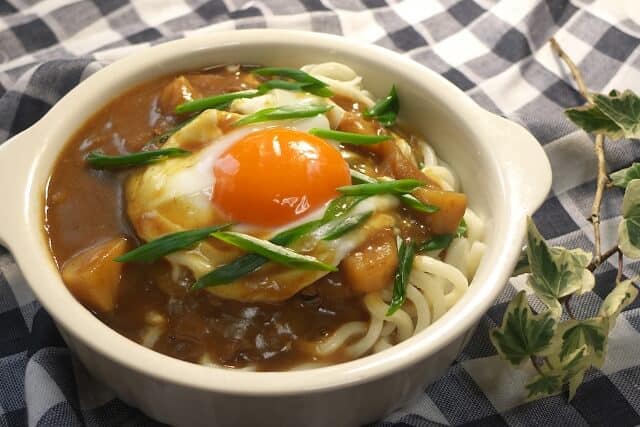
Curry udon (カレーうどん) is a traditional Japanese noodle dish that brings together two favorite Japanese foods: curry and udon noodles. It’s a warm and filling meal loved by people of all ages in Japan. This dish has an interesting history, as it emerged during the Meiji period when Japan was first introduced to Western culinary influences. It’s considered one of the early examples of blending Western elements, like curry, with traditional Japanese noodles like udon and soba. Locals make Curry soup by mixing curry powder into the soup base or by blending curry roux with the stock, sometimes thickened with potato starch. The ingredients can vary widely and may include meats like beef, pork, or chicken, along with vegetables such as carrots and onions. It’s worth noting that when soba noodles are used instead of udon, it’s often referred to as curry soba or curry nanban.
Curry udon History
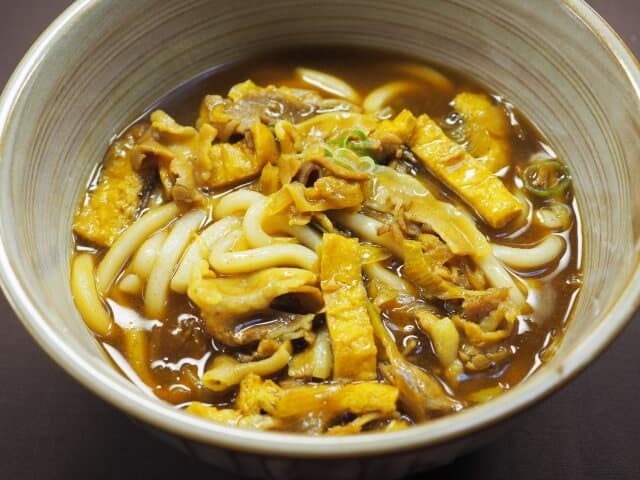
Around 1904 (Meiji 37), curry udon made its debut in Japan, thanks to the innovation of Misasaan, a well-established soba restaurant in Waseda, Tokyo. This unique fusion of Japanese udon noodles and curry soup quickly gained popularity among Waseda University students. Notably, the same restaurant, known as “Michoan,” is also believed to be the birthplace of another beloved Japanese dish, katsudon. To this day, Michoan remains a favorite spot for off-campus dining for university students.
The idea for curry noodles stemmed from the popularity of curry rice during that time. The inventor thought, “If curry goes well with rice, why not try it with udon?” This led to the development of another type of curry, using a method that involved dissolving curry roux with bonito flakes and soy sauce stock and thickening it with potato starch. This innovative dish was initially named “Curry Nanban” due to the use of green onions and introduced to the public in 1904.
Since its inception, curry nanban has continued to evolve and diversify its flavors. Today, you can find variations ranging from very spicy versions with a blend of authentic curry and spices to milder options incorporating milk and coconut, as well as sweet and spicy versions featuring flavored vegetables and fruits. These adaptations have contributed to the enduring popularity of curry noodles, satisfying the palates of discerning food enthusiasts over the course of a century.
Day of Curry Udon
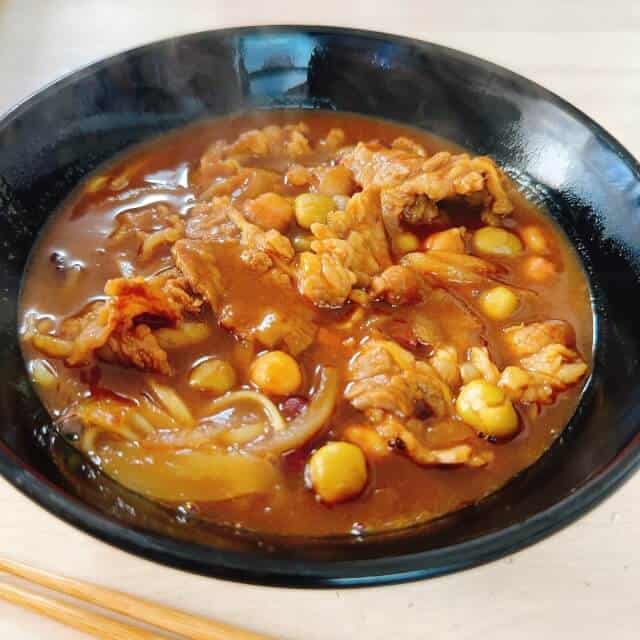
Did you know that there’s a special day dedicated to curry udon? This occasion, known as Curry Udon Day, was established in 2010 by the Curry Udon 100 Year Innovation Project, a group passionate about this dish. It’s not just a play on words; the date, August 2nd, was chosen because June 2nd used to be Yokohama Curry Memorial Day, and July 2nd is recognized as Udon Day. So, August 2nd was designated as Curry Udon Day, celebrating this beloved Japanese culinary delight.
Why is curry udon so popular in Osaka?
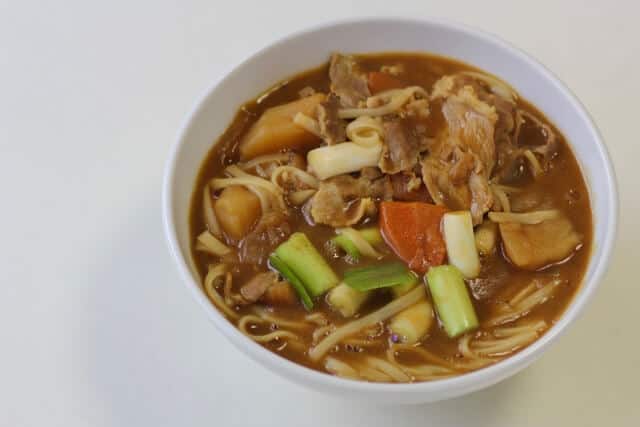
Curry udon is a beloved dish in Osaka due to the city’s longstanding love for “konamon” (flour-based foods). Osaka has been famous for dishes like takoyaki and okonomiyaki, and udon, being a type of flour noodle, is equally cherished. Additionally, Osaka is renowned as Japan’s gourmet city, and curry has always had a strong presence here. The combination of these culinary influences has led to the widespread popularity of curry udon in Osaka, with many restaurants offering their own unique versions. Whether it’s authentic spice-infused curry or dashi-based curry udon showcasing Kansai’s “dashi” culture, Osaka’s vibrant food scene has made curry udon a diverse and celebrated menu item in the city. In a city known for its culinary competition and diversity, it’s no surprise that curry udon has found a special place in the hearts of Osakans.
Various curry udon
Chicken breast and green onion
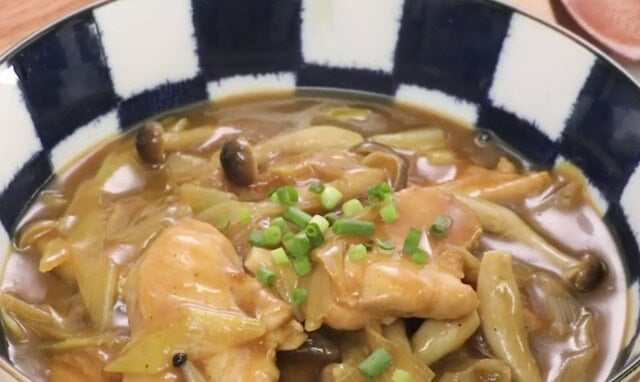
The great thing about this is that you can make it with a store-bought curry roux.The flavor of the chicken breast goes well with the curry stock. Slice the green onions diagonally to make them stand out.
Soy milk
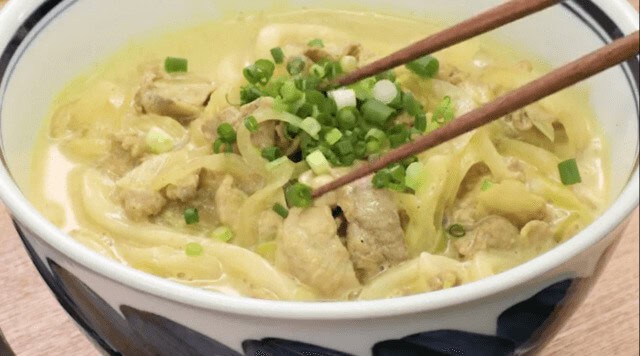
Another type that locals made with soy milk and curry powder! It uses mentsuyu to add flavor, so it’s easy to make soup stock. The gentle soy milk-based curry soup and the flavor of the pork combine to whet your appetite.
Curry stew udon
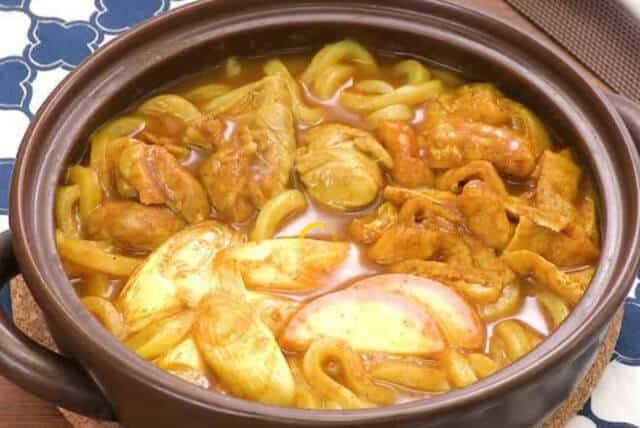
This is curry stew udon that you want to eat on a cold day! The curry noodles contains chicken thighs and fried tofu, so you can really enjoy the flavor and flavor.
Curry udon vs Regular udon
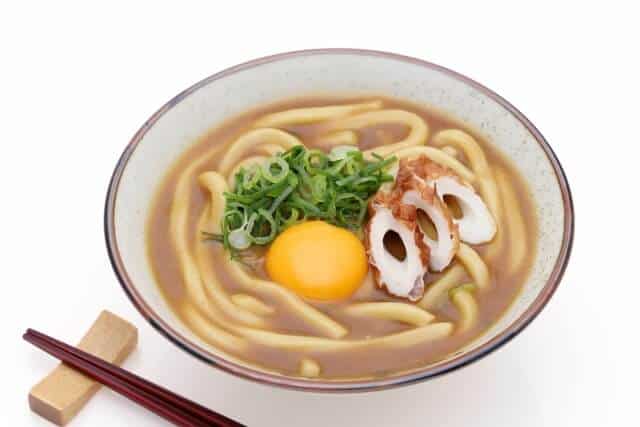
Curry udon and regular udon are distinct dishes with notable differences. This dish has a curry-flavored broth or sauce, akin to Japanese curry. That every known for its mild, sweet, and slightly spiced taste. In contrast, regular udon typically involves udon noodles served in a savory soy-based broth. Offering variations in flavor that do not include curry. The key distinction lies in the broth or sauce: curry noodles feature a curry sauce poured over the udon noodles. It is usually made by dissolving curry roux in the stock and thickening it, while regular udon relies on ingredients like soy sauce, mirin, dashi (fish stock), and sometimes miso paste to create a savory and umami-rich broth.
Additionally, this type of curry can vary in spiciness, with options ranging from mild to very spicy. While regular udon generally focuses on the umami and savory aspects of its broth. Toppings also differ, with curry noodles often garnished with sliced scallions, tempura flakes, and sometimes a soft-boiled or fried egg. Whereas regular udon may include ingredients such as green onions, tempura, kamaboko (fish cake), and nori (seaweed), depending on the specific udon variation.
Curry udon FAQ
- Is curry udon spicy?
The spiciness of this dish can vary depending on how it is prepared and individual preferences. In general, curry noodles can range from mild to very spicy. The level of spiciness is typically determined by the type and amount of curry powder or spices used in the curry sauce. Some people enjoy a milder, sweeter curry noodle, while others prefer it to be quite spicy.
- What are common toppings for curry udon?
Common toppings for curry noodles in Japan can vary depending on personal preferences and regional differences. Some traditional and popular choices include thinly sliced green onions, crispy tempura flakes, and soft-boiled or fried eggs, which provide a creamy contrast to the savory curry sauce. Fukujinzuke, a sweet and tangy pickled vegetable relish, while narutomaki, a distinctive pink and white fish cake, brings a unique swirl pattern to the dish. Toasted sesame seeds offer nuttiness and crunch, while pickled ginger adds a slightly tangy and spicy element.
Curry udon Recipe
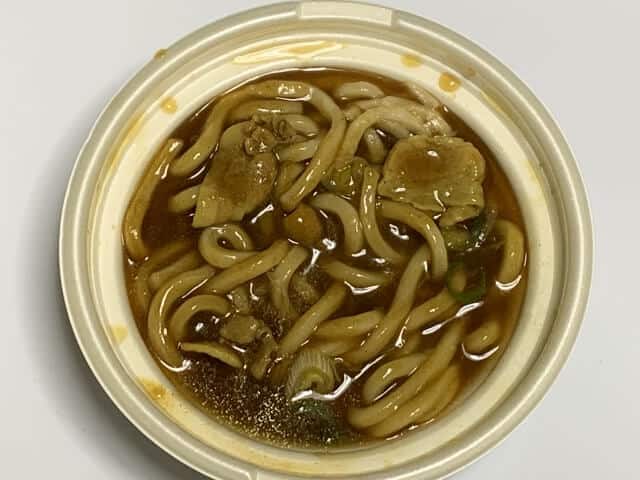
Ingredients
| Ingredients of Curry udon for 2 persons | Measurements |
|---|---|
| Boiled udon | 200g |
| Dashi soup | 600g |
| Long onion (white onion) | 20g |
| Fried tofu | 10g |
| Pork belly (thinly sliced) | 100g |
| Kamaboko | 8g |
| Salad oil | 7g |
| Curry powder | 14g |
| Potato starch | 21g |
| Flour | 14g |
| Water (soup stock if available) | 60g |
| Soy sauce (light if you have it) | 49g |
| Mirin | 28g |
| Sugar | 14g |
How to make Curry udon?
Use a base of “thick dashi stock + curry powder” instead of curry roux. Combine “40g of dried bonito flakes per liter of water,” or a mixture of 20g of thick shaved bonito flakes and 20g of thick shaved miscellaneous flakes like mackerel. Cut the green onions, kamaboko, fried tofu, and pork into specified widths.
Stir-fry the green onions and pork. Add a pinch of salt for seasoning when the green onions and pork are nearly cooked. Next, pour in the dashi stock and add aburaage and kamaboko. Bring it to a boil, reduce the heat slightly, and skim off any scum. Let it simmer for 1 to 2 minutes.
Ensure everything is mixed evenly from the bottom to achieve a consistent thickness. Once it thickens, maintain the heat and let it simmer for 1 to 2 minutes to thoroughly cook the flour and stabilize the consistency. Afterward, drain the warm udon noodles in a colander, making sure to remove excess water to prevent the soup from thinning while eating. Finally, top the udon with the curry soup, and your dish is ready to enjoy!
Where to buy Curry udon?
Senkichi (千吉)
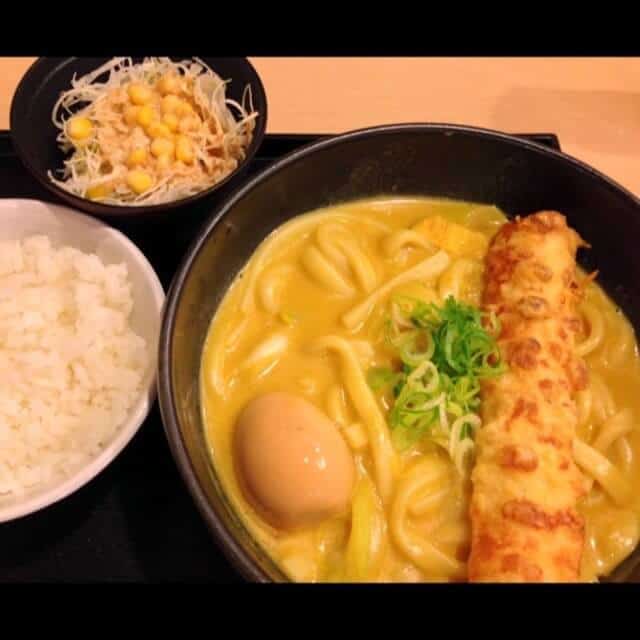
In this shop, they offer “Senkichi Black curry udon” that comes with rice and salad, and chikuwa tempura. It also has an Italian flavor with sour tomato.
Tamaki (たま樹)
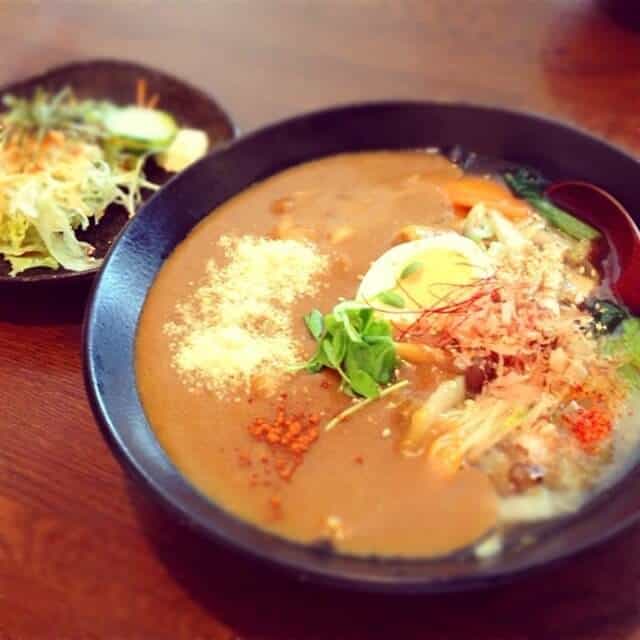
They serve deluxe set with all recommended ingredients. Half of the 1080 yen is a rich curry, and half of it is an interesting soup with dashi sauce.
ZE YO (カレーうどん ZEYO)
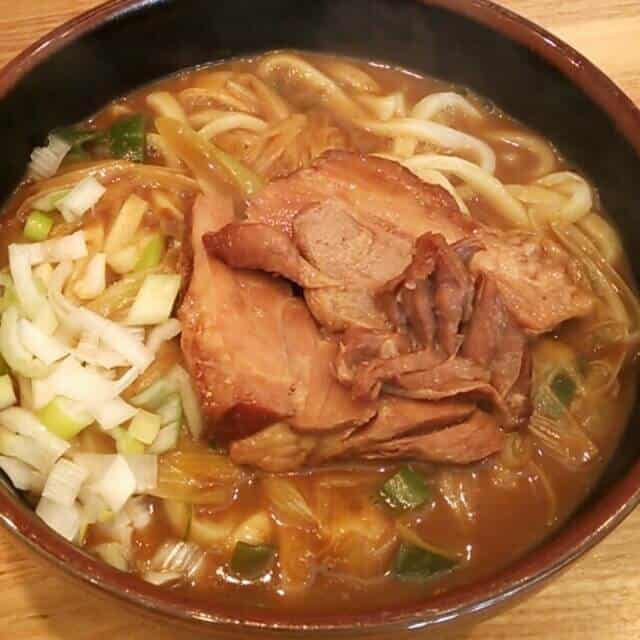
The curry soup at ZE YO restaurant, prepared with a meticulous two-day stock, continues to delight diners with its rich flavor. It complements the chewy udon noodles perfectly. The generously portioned, tender boiled pork adds a satisfying element to the dish, enhancing its overall deliciousness. Additionally, the firm texture of the rice makes it an ideal accompaniment to the dish serving as a convenient chopstick rest.
Takeaway
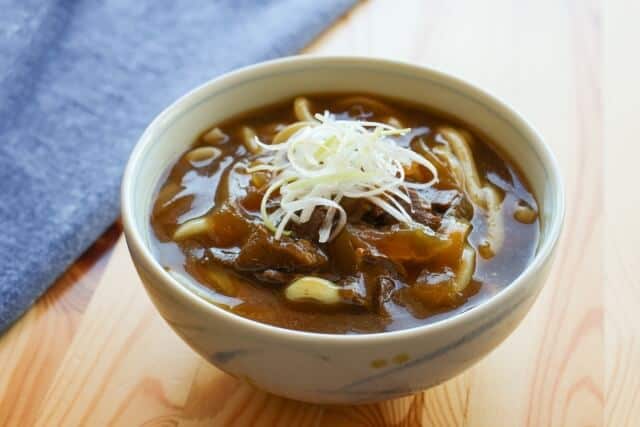
Curry udon is a beloved and flavorful dish that beautifully merges the rich, aromatic essence of Japanese curry with the comforting appeal of udon noodles. Its versatility, with options ranging from mild to spicy and various toppings, makes it a favorite among Japanese diners of all ages. Whether enjoyed at a local restaurant, made from scratch at home or savored during a bustling street festival, curry udon’s delectable taste and cultural significance continue to captivate the hearts and palates of people both in Japan and around the world.
You can check some Japanese curry dishes that we know you would like to try too.



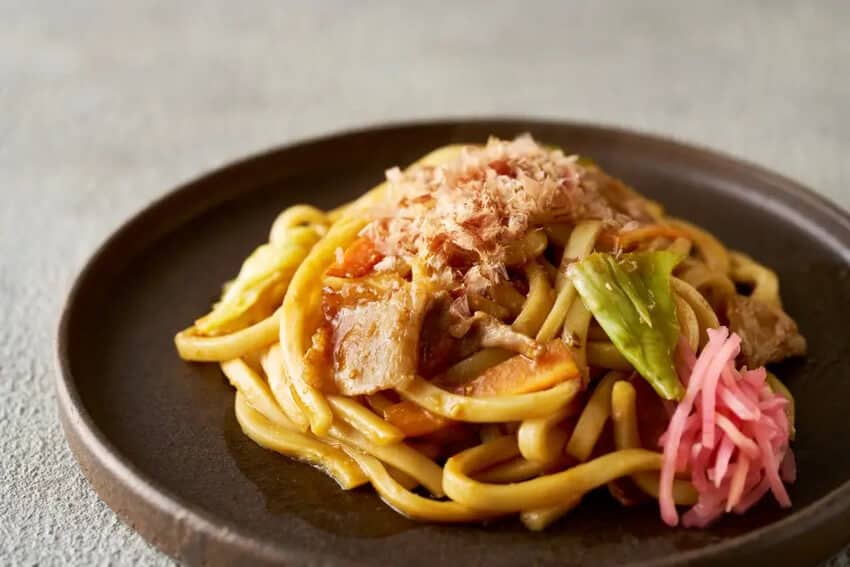
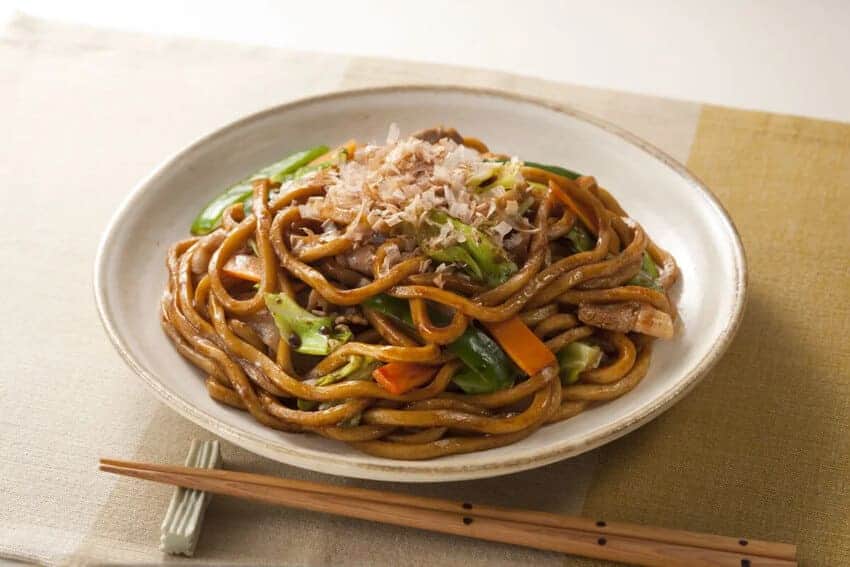

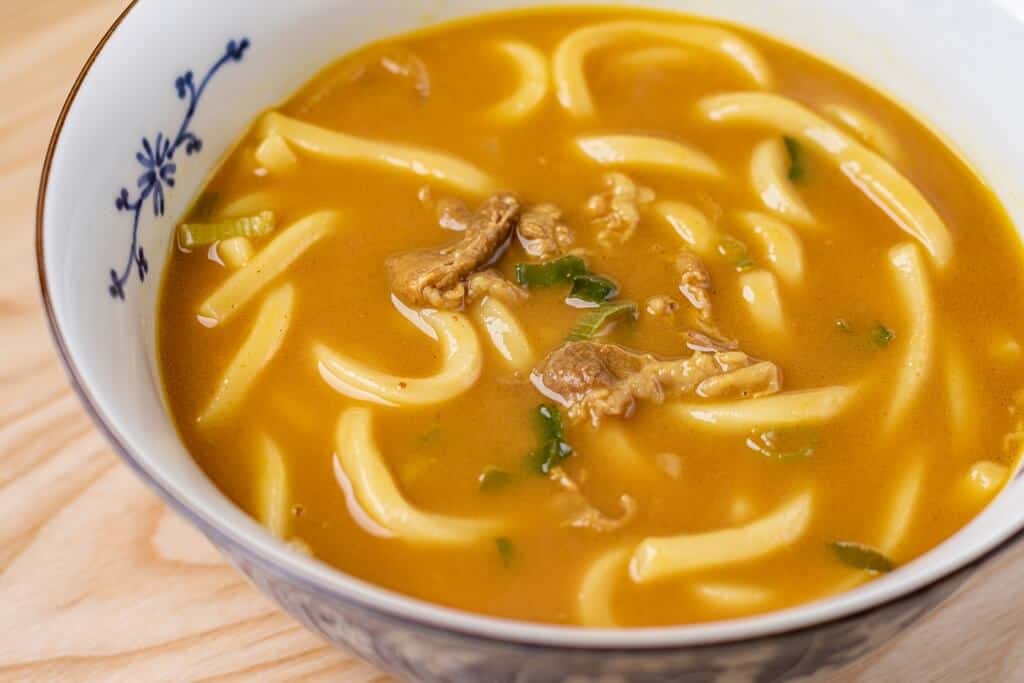
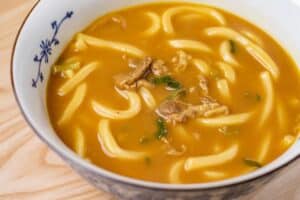
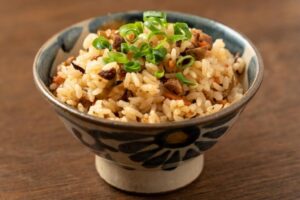
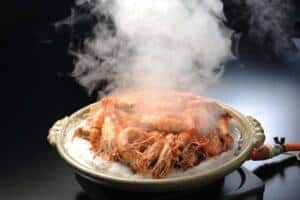
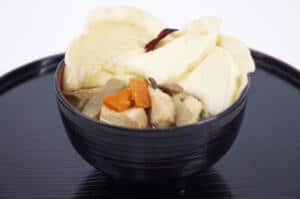
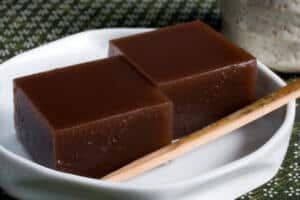
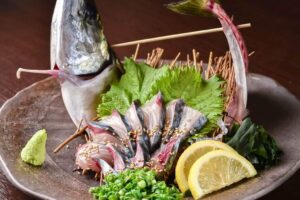
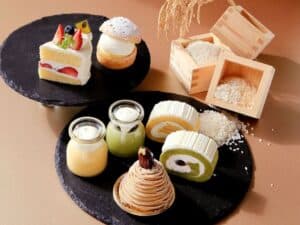
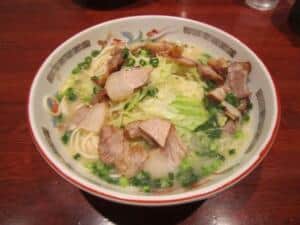
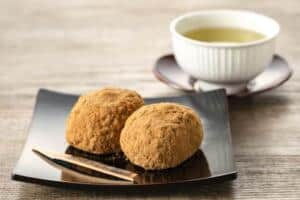
Comments